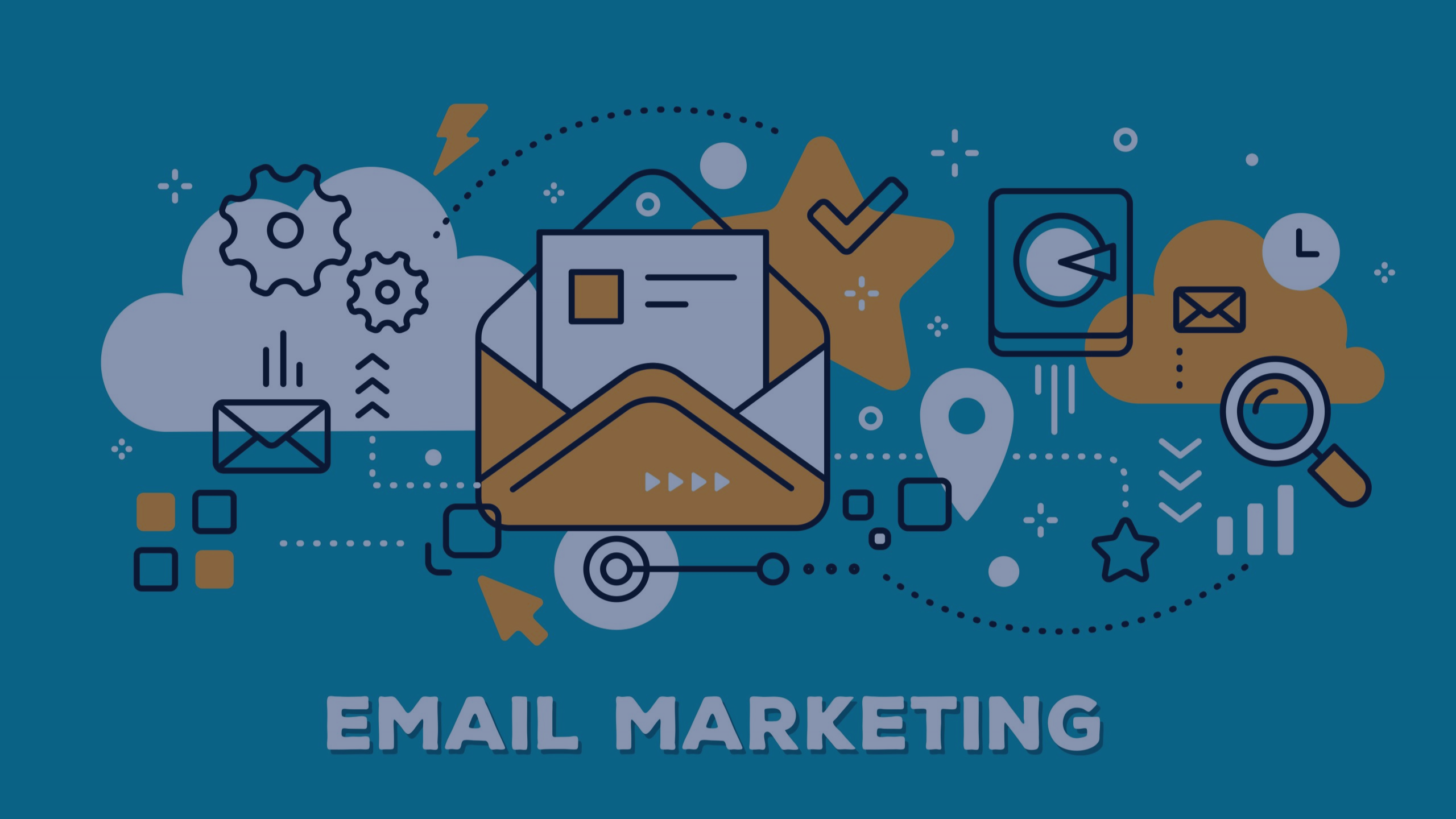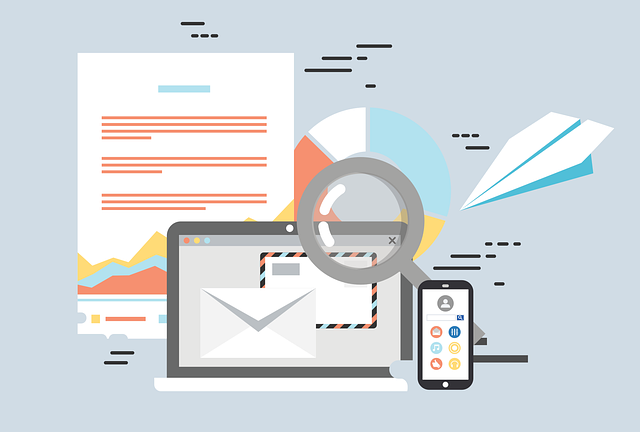The Top 10 Email Marketing Best Practices
We're happy you're here to read about email marketing best practices. You've come to the correct spot if you want to increase the efficiency and return on investment of your email marketing. The top 10 email marketing best practices that will improve your outcomes are shared in this article. We'll go through everything you need to know to advance your email marketing efforts, from creating captivating subject lines and customizing your emails to optimizing for mobile and abiding by the law. So let's get started right away!
Best Practice #1: Have a Clear Purpose for Each Email
Having a clear purpose for each email campaign is one of the most crucial best practices for email marketing. It's critical to be clear about your goals for each email, whether you want to advertise a new product, increase website traffic, or create leads. This will assist you in developing a message that is targeted and pertinent to your target demographic, and it will also make it simpler to assess the campaign's effectiveness.
So how do you choose an email campaign's goal? Asking yourself what action you want your subscribers to take is a good place to start. Do you want them to buy something, download something, or register for a webinar?
Once you've determined your objective, you may create messaging that supports it. For instance, you may add a clear call to action and emphasize the advantages of the product if you want subscribers to make a purchase. On the other hand, you may stress the value of the information and how it will assist subscribers in addressing a particular problem if you want them to download a whitepaper.
You may successfully interact with your subscribers and persuade them to take the necessary action by having a clear objective for each email campaign and creating a message that is in line with that aim.
Best Practice #2: Segment Your Email List
Segmenting your email list is a crucial best practice for email marketing. Segmentation is the practice of breaking up your email list into more manageable groupings based on similar traits or passions. Your open and click-through rates may increase if you segment your list so that you may send your subscribers more focused and pertinent emails.
An email list can be segmented in a variety of ways. Here are a few illustrations:
Demographics: You may divide your list into several groups according to things like age, gender, region, and job title. You may, for instance, make distinct groups for subscribers from various parts of the world or men and women.
Interests: If you have information on the interests of your subscribers, you may utilize it to build segments. For subscribers who are interested in sports, technology, or fashion, you may make distinct portions.
The behaviors of your subscribers, such as whether they read emails, click links, or make purchases, may also be used to segment your list. A section for subscribers who have just made a purchase, for instance, or for subscribers who haven't opened an email in a specific amount of time, may be created.
Your email list may be segmented so that you can send subscribers emails that are more likely to be interesting and relevant to them. This might assist you in raising the general efficacy of your email marketing campaigns.
Best Practice #3: Personalize Your Emails
Another crucial best practice for email marketing is personalization. You may enhance your subscribers' engagement and conversion rates by customizing your emails to make them more pertinent and interesting.
Your emails may be personalized in a variety of ways. Utilizing the recipient's name in the email's subject line or text is a straightforward yet efficient strategy. This might contribute to making the reader's experience more individualized and welcoming.
Utilizing material that is specialized depending on the interests or actions of your subscribers is another method to make your emails more personalized. For instance, if you have information on the goods that a subscriber has expressed interest in, you may contact them with suggestions for related products. Or you may send them emails with more of the kinds of material they frequently interact with if you have information on that.
The success of your campaigns may be increased by employing personalization in your email marketing to provide your subscribers a more tailored and pertinent experience.
Best Practice #4: Optimize for Mobile
It's critical now more than ever to optimize your emails for mobile devices due to the rising use of smartphones and tablets. In fact, more than half of emails are opened on mobile devices, therefore it's imperative to make sure your emails display and work correctly on them.
There are a few important factors to bear in mind when designing your emails to be mobile-friendly. Make sure your emails are responsive in the sense that they adapt to the size and layout of the device being used to view them. By doing this, you can guarantee that your emails will appear excellent and be simple to read on all kinds of devices.
The size of your email is another crucial factor. Because mobile screens are typically smaller than desktop ones, it's critical to write succinct, direct communications. This will guarantee that your message is not buried behind a mountain of content or a jumble of distracting design components.
To make sure your emails appear and work as intended, test them on a range of mobile devices. This will assist you in finding and fixing any problems before sending your email to your readers.
You can make sure that your communications are efficiently delivered to a sizable and expanding portion of your audience by optimizing your emails for mobile.
Best Practice #5: A/B Test Your Emails
Split testing, sometimes referred to as A/B testing, is a potent method for improving your email marketing. By comparing two email versions, you may determine which one works better in terms of KPIs like open rate, click-through rate, or conversion rate.
You may A/B test a variety of email components, including the subject line, layout, design, call to action, and content. For instance, you may compare the open rates of two distinct subject lines or compare the conversion rates of two alternative calls to action.
You must make two different versions of your email and distribute them to a sample of your email list in order to execute an A/B test. The outcomes of the two versions may then be compared to determine which one performs better. To precisely identify the component that caused the performance difference, it's crucial to test just one variable at a time.
You may enhance the performance of your email marketing campaigns overall and optimize your campaigns by A/B testing your emails.
Best Practice #6: Keep It Simple and Focused
It's crucial to maintain simplicity and concentration when it comes to email marketing. This entails staying away from cluttering design, speaking plainly and succinctly, and having a single, distinct message or call to action. This will increase the likelihood that your subscribers will take the appropriate action by making sure your emails are simple to read and understand.
Here are some pointers for keeping your emails concise and on-topic:
Use a subject line that expresses the email's content succinctly and properly.
Maintain a neat and simple style with lots of white space and distinct headers.
Utilize bullet points and brief paragraphs to make the text simple to skim.
Make sure you have a single, distinct message or call to action that is conspicuous and simple to identify.
A lot of graphics or links might detract from your content, so limit their use.
You may write emails that are simple to read and comprehend, which will increase the likelihood that your subscribers will interact with them and convert.
Best Practice #7: Use a Consistent Email Format
Utilizing a standard email format is a crucial best practice for email marketing. You may establish trust with your subscribers and make it simpler for them to recognize and interact with your emails by utilizing a consistent structure.
So what information should be included in a standard email format? Here are a few illustrations:
Header: Your email's header should feature your company's logo, brand colors, and any other branding components that aid in customer recognition. As a result, it will be simpler for your subscribers to distinguish your emails and assist in building your brand identification.
Your physical address, phone number, and links to your social media accounts should all be listed at the email's bottom. Include a link to your privacy statement and a method for subscribers to unsubscribe from receiving emails from you.
Branding components: You should think about putting other branding components in your emails, such as your brand's colors and fonts, in addition to the header and footer. This might assist in giving your emails a unified and consistent appearance and feel.
You may develop your brand identity and make it simpler for your subscribers to recognize and interact with your emails by adopting a consistent email style.
Best Practice #8: Use a Professional Email Service Provider
Another crucial best practice for email marketing is using a specialized email service provider. You can increase the deliverability of your emails, automate your email campaigns, and have access to powerful analytics and reporting tools with the assistance of a professional email service provider.
The following are some advantages of utilizing a specialized email service provider:
Increased deliverability: By taking care of things like authentication, IP reputation, and spam filters, a professional email service provider may assist in increasing the deliverability of your emails. By doing this, you may ensure that your emails reach their recipients' inboxes without being marked as spam.
Automation features: Many reputable email service providers have automation features, such as the ability to trigger emails in response to particular events or activities. If a subscriber makes a purchase, for instance, or if they haven't opened an email in a given amount of time, you may program an automatic email to be sent to them.
Analytics and reporting: Reputable analytics and reporting tools are frequently provided by professional email service providers, allowing you to keep tabs on the effectiveness of your email campaigns. This can include less complex measures like the revenue earned and client lifetime value as well as more sophisticated indicators like the open rate, click-through rate, and conversion rate.
Make sure to take into account aspects like the size of your email list, your spending limit, and the particular features and capabilities that you want when selecting a professional email service provider. You may increase the efficiency and return on investment of your email marketing initiatives by working with a reputable email service provider.
Best Practice #9: Follow Email Marketing Regulations
To guarantee that your efforts are morally and legally sound, it's crucial to adhere to email marketing rules. If you break these rules, you risk paying fines, harming your reputation, and losing the confidence of your subscribers.
The CAN-SPAM Act, which outlines standards for promotional communications, is the primary email marketing law in the United States. The CAN-SPAM Act has a number of important provisions, including:
- Make sure to clearly identify yourself as the email's sender.
- Sending an email with a real, working postal address
- Letting recipients choose whether or not to receive your emails in the future
The General Data Protection Regulation (GDPR), which lays out standards for the collecting and use of personal data, is the primary email marketing law in the European Union. The following are some of the GDPR's primary requirements:
- Getting subscribers' express approval to receive emails from you
- Provide comprehensive details on how you plan to utilize their personal information
- Facilitating easy withdrawal of permission and exercise of data rights by subscribers
Learn about the rules of the CAN-SPAM Act and the GDPR and be sure to adhere to them when sending emails to your subscribers to guarantee that your email marketing operations comply with all applicable laws.
Best Practice #10: Analyze and Optimize Your Email Marketing Efforts
The last best practice for email marketing is to continuously assess and improve your efforts. You may find areas for improvement and make adjustments to optimize your email marketing for better outcomes by routinely monitoring the effectiveness of your efforts.
You must monitor important metrics like open rate, click-through rate, and conversion rate in order to evaluate and improve your email marketing campaigns. To obtain this information, use the analytics and reporting tools offered by your email service provider. Additionally, you may compare several iterations of your emails using A/B testing to discover which ones perform better.
You may make adjustments to optimize your campaigns once you've determined what needs work. To evaluate if a new subject line, style, or call to action produces better results, for instance, you may experiment. To determine if it improves performance, you may also segment your email list and modify your messaging for particular subscriber groups.
You can consistently increase the efficiency of your campaigns and get greater results by continuously reviewing and adjusting your email marketing efforts.
Conclusion
The top 10 email marketing best practices are discussed in this blog article. These best practices include having a clear goal for each email, segmenting your email list, personalizing your emails, optimizing for mobile, A/B testing, keeping it simple and focused, using a consistent email format, working with a reputable email service provider, adhering to email marketing laws, and monitoring and improving your email marketing efforts.
You may raise the efficiency and return on investment (ROI) of your email marketing initiatives by adhering to these best practices. These best practices will help you produce more interesting and effective email marketing campaigns, regardless of whether you're a small company owner, a marketing expert, or an entrepreneur.
We hope that this blog article has given you insightful information and practical advice for enhancing your email marketing initiatives. Remember that these best practices are only a place to start; the trick is to consistently test and improve your campaigns to determine which ones are most effective for your company. Therefore, use these best practices in your own email marketing campaigns.











